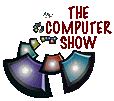HOME
By Al Giovetti
Price:TBA
Genre:auto racing simulator
Release:March 1997
Developer: Pioneer Productions
Lead Artist:
Programmer:
Producer:
Publisher: Electronic Arts
Phone:
Website:
www.ea.com
Requirements:Pentium-90, 16 MB RAM, 4X CD-ROM, sound board, Windows 95 (Pentium 166 MHz strongly recommended)

The Need for Speed II (2)
History
The original Need for Speed is a fast action, in-your-face driving game with all the frills.
Company Line
You always want more. Faster, louder, harder. It's no different with your cars. Power, speed, torque - you can never get enough. You want to powerslide on the razor-edge between chaos and control. You want to drift wide in a symphony of glowing pistons and shrieking rubber, then pull it back faster than you did last lap.Wait no longer. Need for Speed II puts you square in the cockpits of previously untouchable supercars, each modeled to exact to manufacturer specs. And we did more than just craft incredibly detailed 3-D cars, environments, and physics models on our computers. Whether building a custom camera rig to capture the jaguar XJ220 going through its paces in Italy or cramming audio equipment in the passenger seat of a Mclaren to record its engine in England, we stopped at nothing - nothing - to capture the world's most exotic machines.
This is one simulation that feels like the real thing. Except for the smell of new leather and burning rubber.
Game Play
A new game engine has been designed for the game that plays much, much faster. The game has a first person perspective interface with tghe dials below the windshield out on the three dimensional racing world. The guages are the same as on the real exotic cars. This one reminds me a lot of the original Test Drive (see the review in the archives).
The game features exotic cars, such as Lamborghinis and a new list of international tracks including the Outback which runs over the Sydney, Australia harbor bridge past the famous and breathtakingly beautiful Opera House. Other courses include Pacific Spirit, and Mediteraneo.
The handling of the cars on the extremely unique and the exciting tracks are very accurate. Not only are the tracks accurate, but they are outrageous when considering that the cars are expected to jump and traverse rough terrain, things high performance vehicles do not do well.
The copy and the radar detector were taken out alltogher, so that the links with the earlier Accolade Test Drive game from the 1980s is all but severed in this version.
The two racing modes include Arcade and Simulation. Arcade improves handling, but Simulation does not increase realism. The cars do perform according to their statistics in real life. The game lacks a true and accurate physics model from which to build the realism.
Plot
Graphics
The almost 50 percent greater detail in the game is at the expense of performance so that a Pentium 166 MHz is a minimum configuration to enjoy the game.
Animation
In order to increase smoothness you may be forced to turn off ground textures and set resolution low to increase the frame rate to an acceptable level.Voice Actors
Music Score
Sound Effects
Utilities
Multi-player Features
Cheats, Hints, Walkthrough
Journalists
Publish your own review or preview, just send us the text by email.
References
Glenn Broderick, Computer & Net Player, volume 3, number 10, March, 1997, pg. 42.Al Giovetti, Test Drive, The Computer Show,
Tasos Kaiafas, GameSpot Review, 70%.
